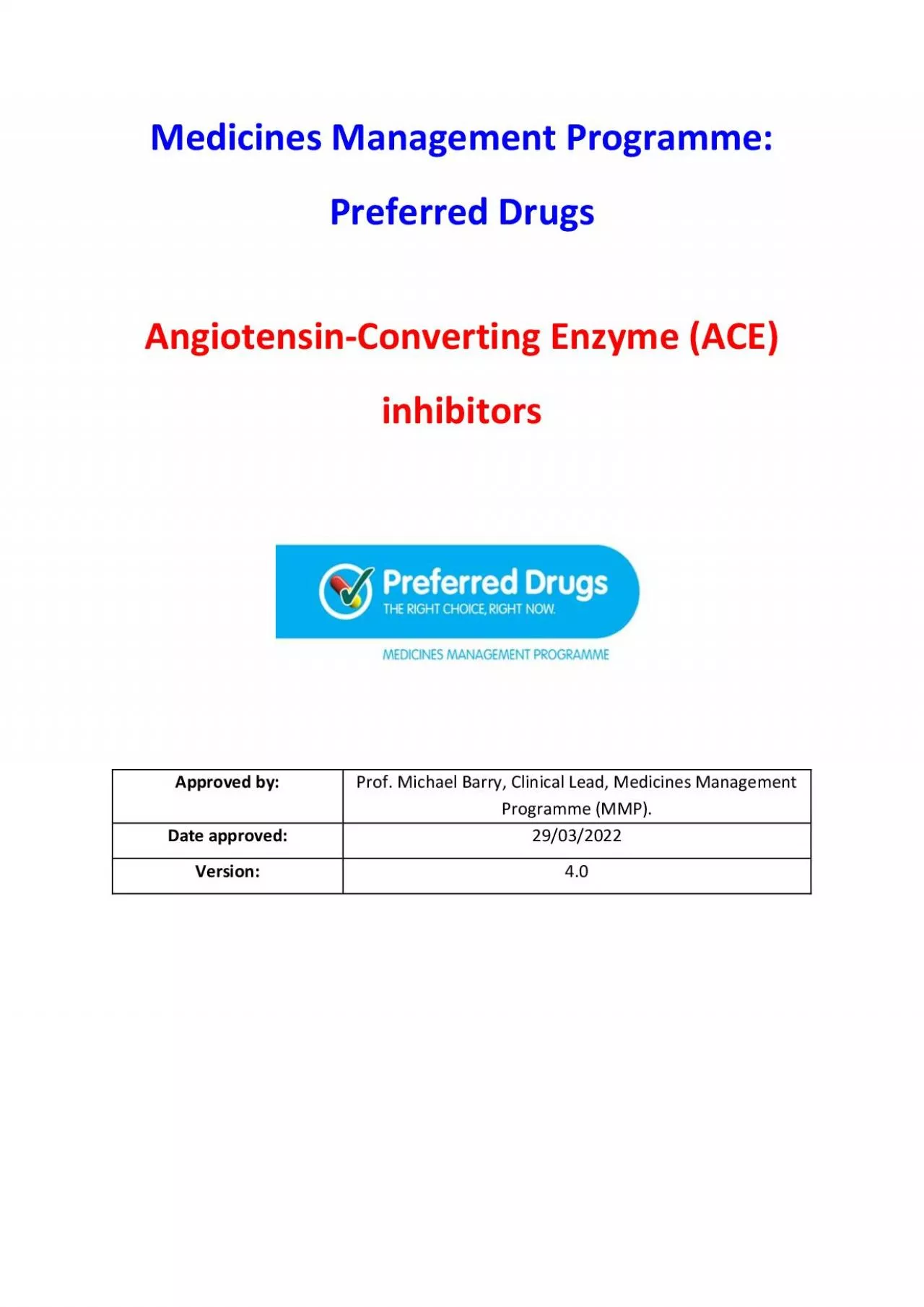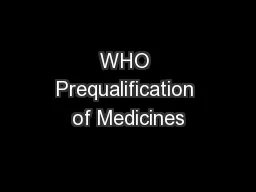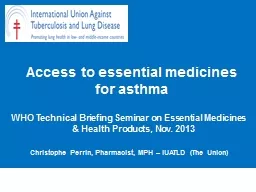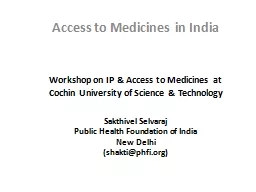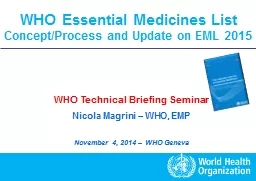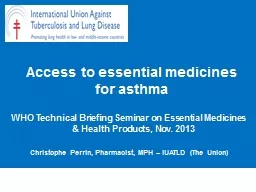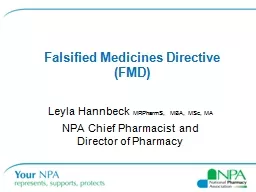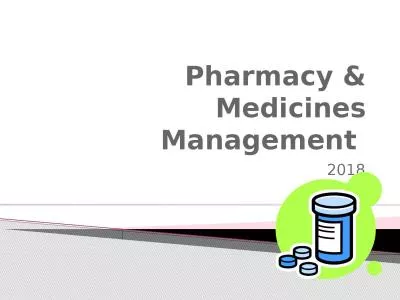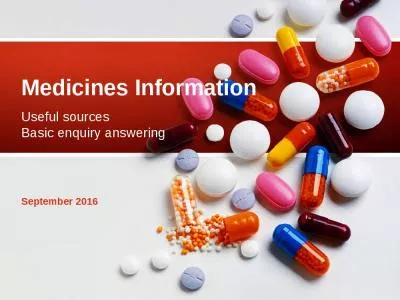PDF-Medicines Management Programme
Author : brown | Published Date : 2022-08-31
Preferred Drugs Angiotensin Converting Enzyme ACE inhibitors Approved by Prof Michael Barry Clinical Lead Medicines Management Programme MMP Date approved 29032022 Version 40 i Table
Presentation Embed Code
Download Presentation
Download Presentation The PPT/PDF document "Medicines Management Programme" is the property of its rightful owner. Permission is granted to download and print the materials on this website for personal, non-commercial use only, and to display it on your personal computer provided you do not modify the materials and that you retain all copyright notices contained in the materials. By downloading content from our website, you accept the terms of this agreement.
Medicines Management Programme: Transcript
Download Rules Of Document
"Medicines Management Programme"The content belongs to its owner. You may download and print it for personal use, without modification, and keep all copyright notices. By downloading, you agree to these terms.
Related Documents

